Rideau Canal: 4 Great Activities at the Historic Marvel
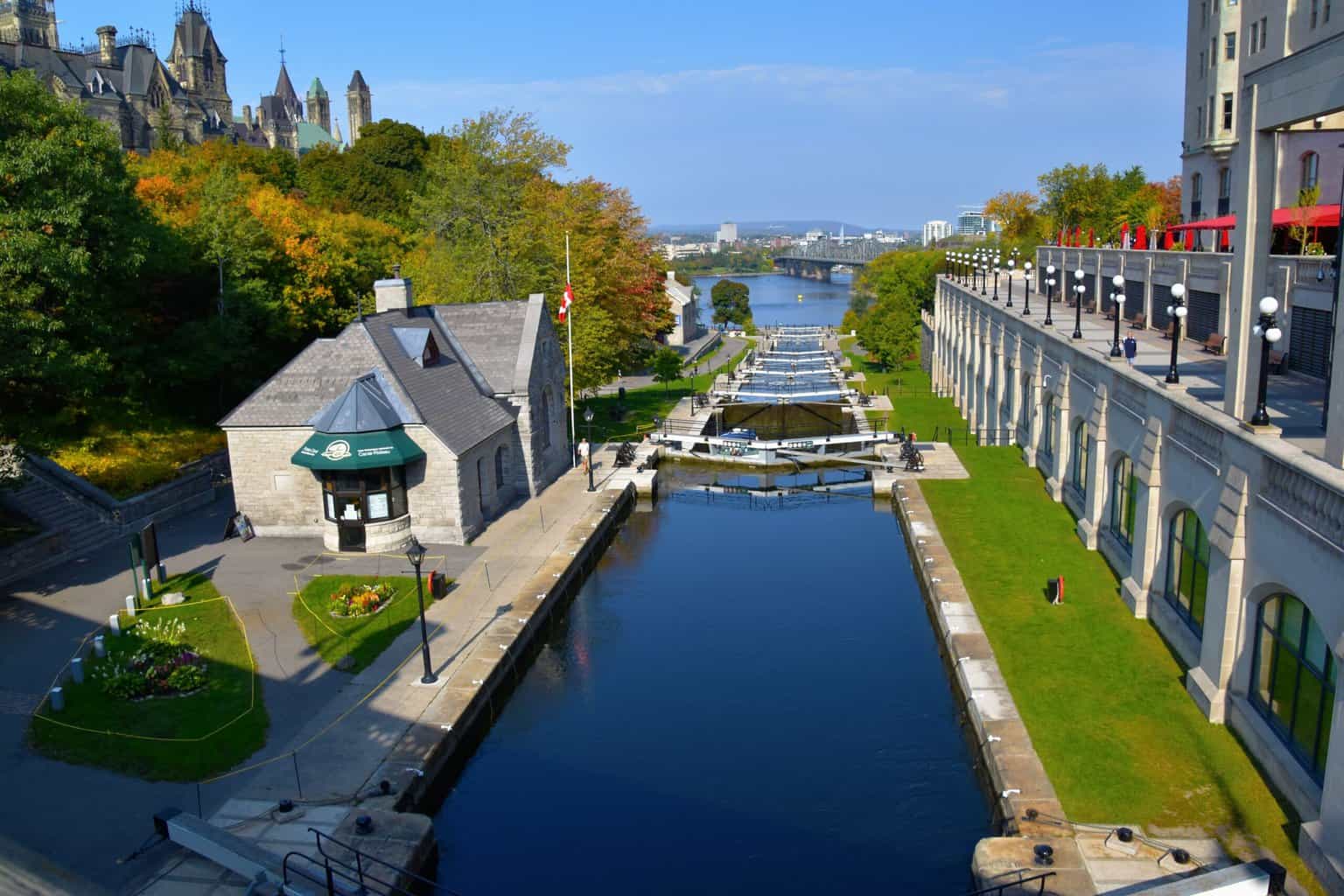
Updated On: November 09, 2023 by Courtney Augello
The Rideau Canal, located in eastern Ontario, Canada, is not just an engineering marvel but also a historical gem and a breathtaking natural attraction. It connects the bustling city of Ottawa, Canada’s capital, to the historic city of Kingston.
Beyond its historical and geographical significance, the Rideau Canal offers a multitude of attractions for tourists to explore and enjoy. The sites, towns, and attractions offer glimpses into the region’s past and provide a deeper understanding of its cultural heritage.
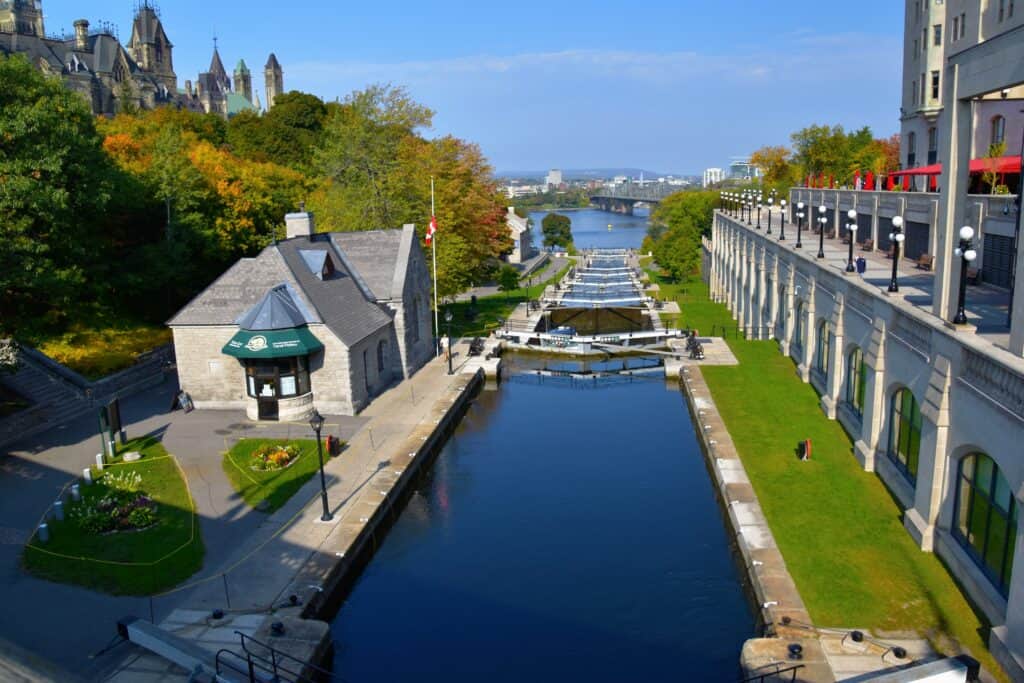
With so much to discover, it can be difficult to plan how to spend your time at the Rideau Canal. To help you create the best possible itinerary and fully immerse yourself, we’ve explored the history, wildlife, and attractions of the Rideau Canal.
Table of Contents
What is the Rideau Canal?
The Rideau Canal is a historic waterway located in eastern Ontario, Canada. Stretching over 202 kilometres, it connects the city of Ottawa, Canada’s capital, to Lake Ontario in Kingston. The canal was constructed in the early 19th century as a military defence route.
The Rideau Canal holds immense historical significance. It is recognised as a National Historic Site of Canada and has been designated as a UNESCO World Heritage Site since 2007.
Today, the Rideau Canal is not only appreciated for its historical value but also for its stunning natural beauty. The canal meanders through picturesque landscapes, making it a popular destination for tourists.
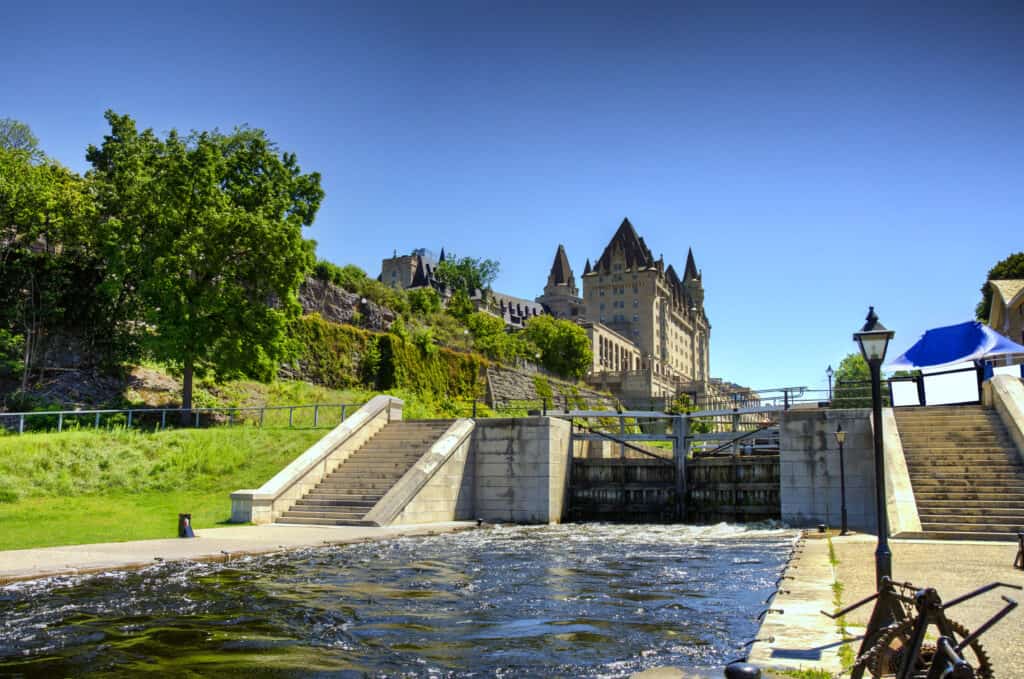
History of the Rideau Canal
Construction
The construction of the Rideau Canal began in 1826 and was completed in 1832. It was initiated under the direction of Lieutenant Colonel John By, a Royal Engineers officer, who was tasked with creating a navigable waterway connecting Ottawa to Kingston.
The primary purpose of the canal was to serve as a military supply route in case of war with the United States, providing a secure alternative to the vulnerable St. Lawrence River. By’s vision was to create a canal system that would allow for transportation, communication, and defence.
Key figures Involved
The canal’s construction was overseen by Lieutenant Colonel John By. He was responsible for the design and implementation of the canal system. By’s meticulous planning and engineering skills were instrumental in the successful completion of the canal.
Bolton succeeded By as the superintendent of the canal after its completion. He was responsible for managing the operation and maintenance of the canal during its early years, ensuring its functionality and viability as a transportation route.
Importance of the Rideau Canal
The Rideau Canal quickly transformed into a crucial transportation route, facilitating the movement of people, goods, and resources between Ottawa and surrounding communities.

The canal’s construction demonstrated the British government’s commitment to protecting its North American territories. It provided a secure and navigable route for military supplies, ensuring that troops and goods could be efficiently transported in times of conflict.
Although the canal was only used for military purposes once during the War of 1812, its strategic importance remained significant. It played a significant role in the economic development of the region, allowing for the transportation of agricultural produce, timber, and other commodities.
Evolution of the canal over time
Following its initial military purpose, the Rideau Canal quickly transitioned into a bustling commercial artery. It became an essential transportation route for various industries, including logging, mining, and agriculture and fostered economic growth between Ottawa and Kingston.
In the late 19th century, the canal underwent significant upgrades to accommodate larger vessels. The locks were enlarged and modified to accommodate the increased size and capacity of steamboats and other commercial ships.
With the advent of railways and the development of road networks, the canal’s commercial importance gradually declined. However, in the 20th century, the Rideau Canal experienced a revival as a recreational waterway.
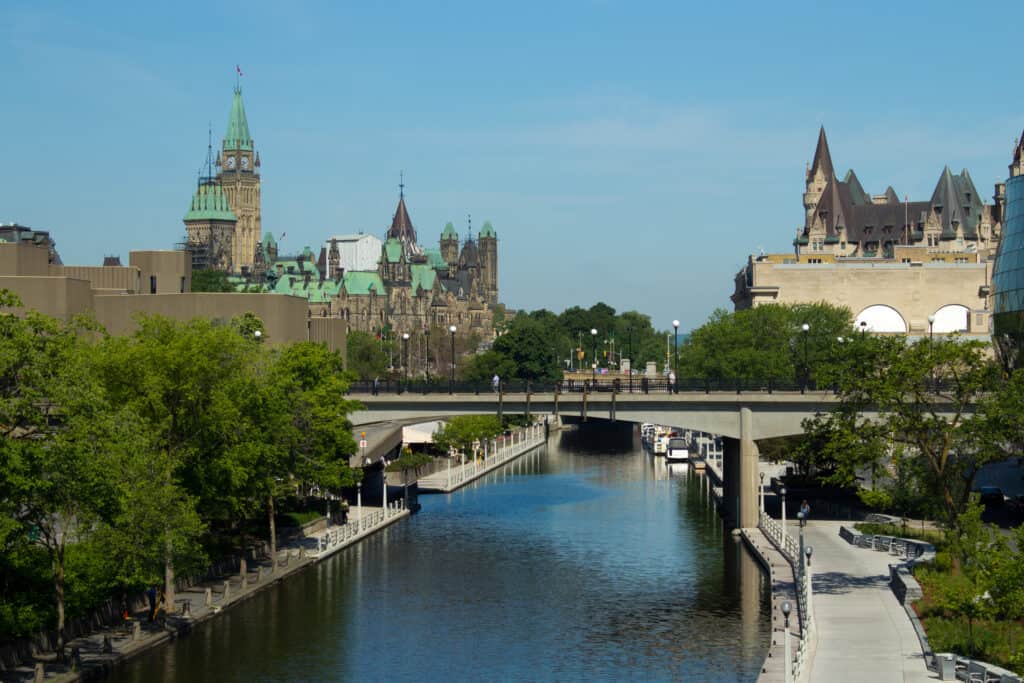
It gained recognition for its historical and natural significance, attracting tourists, boaters, and outdoor enthusiasts. The canal became a National Historic Site of Canada and achieved UNESCO World Heritage status in 2007, preserving its legacy and ensuring its ongoing significance.
Geographical Information
The Rideau Canal serves as a vital link between Ottawa and Kingston, connecting these two significant cities in the region. It provides a navigable waterway that allows for transportation and trade between the Ottawa River and Lake Ontario in Kingston. This connection offers an alternative route to the St. Lawrence River.
The Rideau Canal features a series of locks, dams, and engineering marvels that enable vessels to navigate the elevation changes along its route. There are a total of 45 locks distributed along the canal, including combined locks, single locks, and flight locks.
These locks use a system of gates, chambers, and water levels to raise or lower boats as they travel along the canal. They are manually operated, maintaining the historic character of the canal.
One of the most renowned engineering features of the Rideau Canal is the eight-flight lock system at the town of Smiths Falls. This system allows for a significant change in elevation, lifting or lowering boats a total of 24 metres.
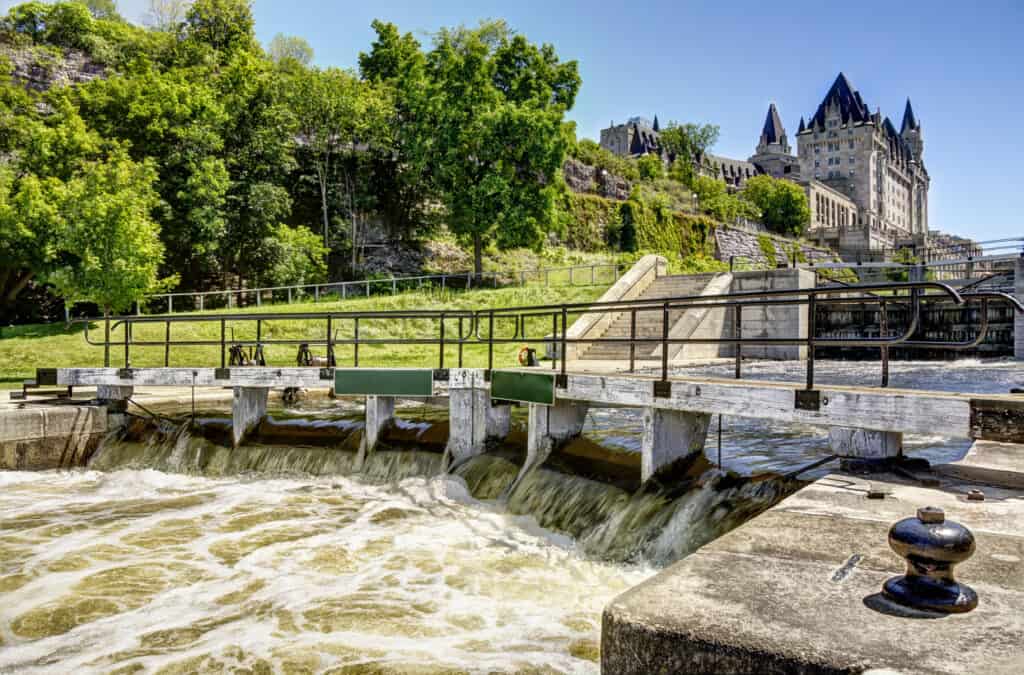
The Rideau Canal passes through several lakes, adding to its scenic beauty. Notable lakes along the route include the expansive Big Rideau Lake, Upper Rideau Lake, and Lower Rideau Lake. These lakes offer tranquil waters for recreational activities.
The canal also navigates various rivers, such as the Rideau River, which flows through Ottawa and merges with the canal at Hog’s Back. Other rivers along the route include the Cataraqui River, which leads to Kingston.
The canal is surrounded by wetlands and marshes, contributing to its ecological diversity. These areas serve as habitats for various plant and animal species and offer opportunities for birdwatching and wildlife observation.
The Rideau Canal passes through picturesque landscapes, including lush forests, serene meadows, and charming small towns. The natural beauty along the canal’s route adds to its allure and makes it a popular destination for nature lovers and outdoor enthusiasts.
Wildlife & Vegetation
The ecosystem surrounding the Rideau Canal is diverse and characterised by a combination of wetlands, forests, meadows, and aquatic habitats. These ecosystems support a wide array of plant and animal life, contributing to the canal’s biodiversity.
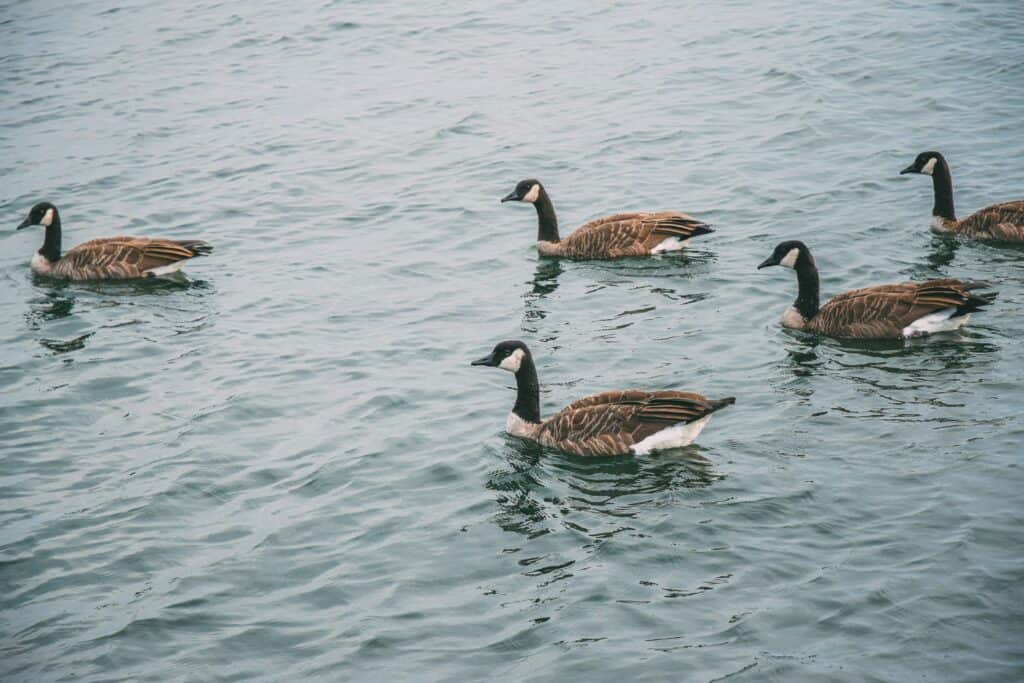
The canal’s water bodies are home to several aquatic plants, such as water lilies, pondweeds, and watermilfoils. These plants provide cover and food sources for various aquatic species.
Wetland areas along the canal support vegetation like cattails, reeds, sedges, and rushes. These plants thrive in shallow water and play a crucial role in stabilising the wetland ecosystem.
The canal’s surrounding forests are composed of a mix of tree species, including maple, oak, pine, and cedar. Understory plants like ferns, wildflowers, and mosses are also commonly found in these woodland areas.
The Rideau Canal also provides shelter for wildlife. It provides a habitat for a diverse range of bird species, including waterfowl like Canada geese. Raptors, such as eagles and hawks, can also be spotted soaring above the canal. Additionally, songbirds like warblers, sparrows, and finches inhabit the trees and shrubs along the canal’s banks.
Various mammal species can be found in the canal’s vicinity, including beavers, muskrats, raccoons, white-tailed deer, and mink. These animals rely on the canal and its surrounding habitats for water sources, food, and shelter.
The canal and its lakes are also home to several fish species, including largemouth and smallmouth bass, northern pike, perch, and various species of sunfish. These fish populations contribute to the recreational fishing opportunities along the canal.
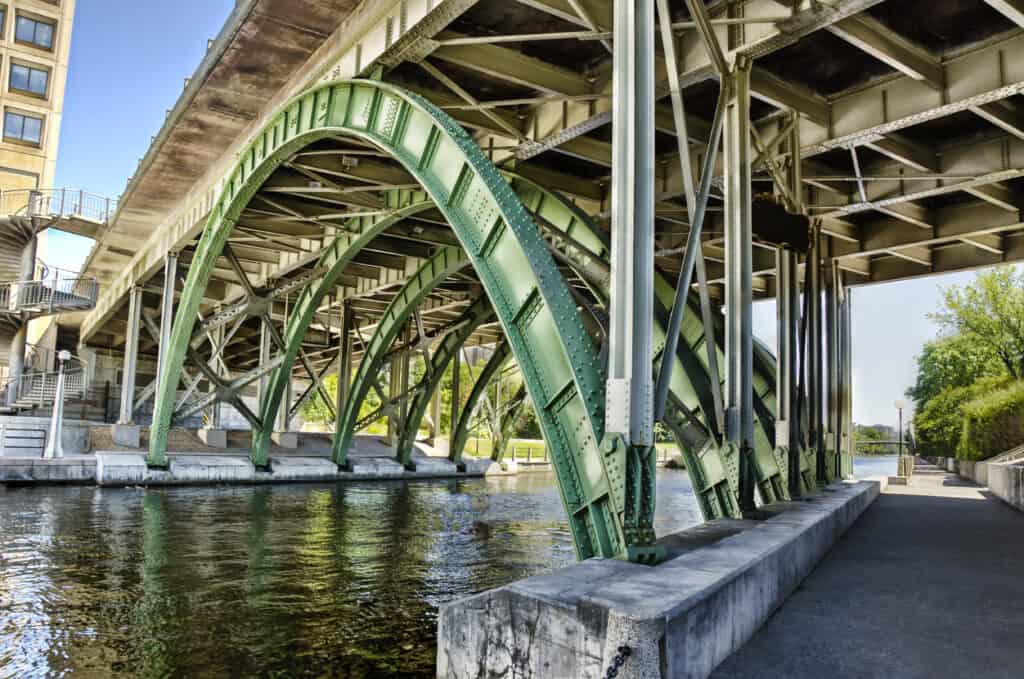
Conservation
Wetlands play a critical role in maintaining the ecological balance of the canal. Conservation organisations work to protect and restore wetland habitats, promoting sustainable practices and minimising human impacts.
Maintaining high water quality is essential for the health of the canal’s ecosystem. Measures are taken to manage and reduce pollution, prevent the spread of invasive species, and promote responsible boating practices.
In addition, efforts are made to protect and monitor species of concern along the canal, including endangered or at-risk species. This includes habitat conservation, research, and public awareness programs to ensure the long-term survival of these species.
Various educational programs and interpretive centres provide information to visitors about the importance of biodiversity conservation. These initiatives aim to raise awareness and foster a sense of responsibility towards protecting the natural environment.
Rideau Canal’s Impact on Local Communities
The presence of the Rideau Canal kickstarted economic development in the region. The canal attracts a substantial number of tourists each year, boosting the local economy through spending on accommodations, dining, entertainment, and various recreational activities.

The Rideau Canal also holds great cultural significance for the local communities. It represents a tangible link to the past, showcasing the historical, architectural, and engineering achievements of the 19th century.
The canal’s heritage value is celebrated and preserved through various initiatives, including museums and heritage tours. The local communities take pride in their connection to the canal and often organise cultural events, festivals, and exhibitions to highlight its importance.
The presence of the canal has fostered a sense of community engagement and pride among local residents. They actively participate in the preservation and promotion of the canal, volunteering their time and efforts in maintaining the locks, trails, and surrounding areas.
Tourist Attractions at the Rideau Canal
Water Activities
The Rideau Canal offers a plethora of boating and water activities for tourists. Boaters can navigate the canal’s waters, enjoying the picturesque scenery and tranquil atmosphere. During the winter, locals ice skate on the frozen sections of the canal.
Whether it’s sailing, kayaking, canoeing, or motorboating, the canal provides opportunities for both experienced boaters and beginners. Boating enthusiasts can explore the interconnected lakes, rivers, and locks, experiencing the unique charm of this historic waterway.

Admiring Nature
The Rideau Canal is renowned for its scenic beauty and picturesque landscapes. The canal meanders through stunning natural surroundings, including serene lakes, lush forests, and charming small towns.
Travelling along the canal offers breathtaking views of the changing seasons, with vibrant colours in autumn and lush greenery in summer. The canal’s tranquil waters, lined with trees and bordered by meadows, create a peaceful atmosphere, perfect for relaxation.
Historic Sites
The Rideau Canal is dotted with numerous historical sites and landmarks that offer a glimpse into its rich past. Visitors can explore well-preserved heritage sites, including locks, dams, and old mill buildings.
Notable landmarks along the canal include the Ottawa Locks, Chaffey’s Lock, Jones Falls Locks, Fort Henry, and the iconic eight-flight lock system at Smiths Falls. Historic towns such as Merrickville and Perth offer historic architecture and museums.
Recreational Activities
The Rideau Canal provides a wide range of recreational opportunities for tourists to enjoy. Hiking and cycling trails wind their way along the canal, offering scenic routes for outdoor enthusiasts to explore.
Visitors can embark on walking or cycling tours, discovering the natural beauty and historical landmarks at their own pace. Additionally, camping is available at various campgrounds along the canal.
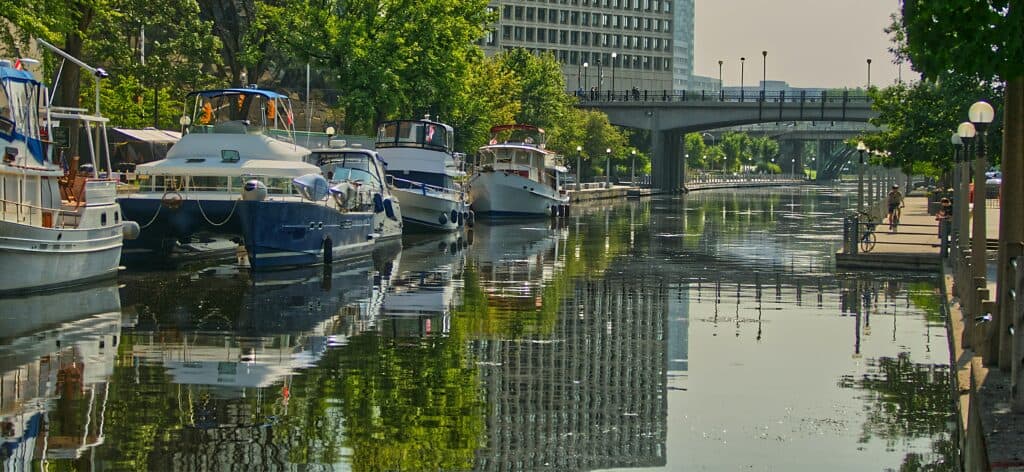
Fishing is another popular activity, with opportunities to catch a variety of fish species in the canal’s waters. With its interconnected lakes, rivers, and diverse aquatic habitats, the canal provides a rich and rewarding fishing experience for enthusiasts of all skill levels.
The canal is home to a variety of fish species, making it a haven for anglers looking to test their skills and land some impressive catches. Among the fish species that can be found in the canal’s waters are largemouth and smallmouth bass, northern pike, walleye, and more.
From boating and water activities to the scenic beauty of its landscapes, the canal provides a unique and memorable experience. The historical sites and landmarks offer a glimpse into the past, while the recreational opportunities allow visitors to engage with the natural environment and partake in various outdoor activities.
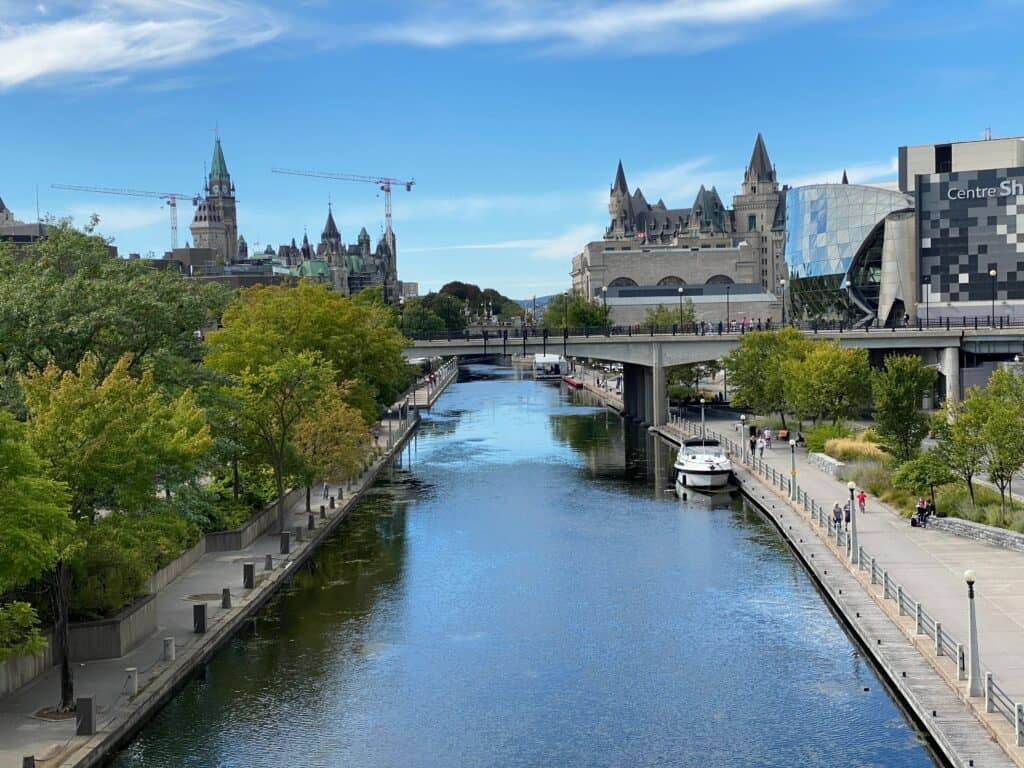
The Rideau Canal is a Fascinating Historic Site
Rideau Canal stands as a testament to human ingenuity, natural beauty, and historical significance. Through its rich history, diverse geography, thriving wildlife, and captivating attractions, the canal has left an indelible mark on the region of eastern Ontario, Canada.
The Rideau Canal’s construction and purpose were rooted in strategic military considerations, designed to provide a secure supply route in case of conflict. However, it quickly evolved into a vital commercial artery, facilitating economic development between Ottawa and Kingston.
The Rideau Canal is a cherished treasure. Its enduring legacy as a national historic site and UNESCO World Heritage Site showcases its profound impact on the region and its ability to captivate the hearts and minds of all who encounter it.
If you’re planning to visit Canada, check out our list of the Top 10 Fascinating Haunted Places in Canada.






